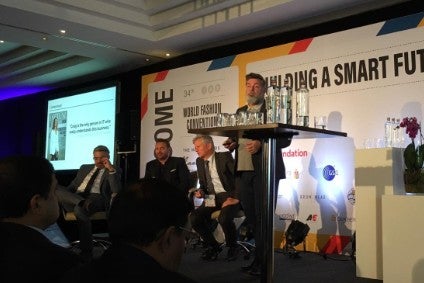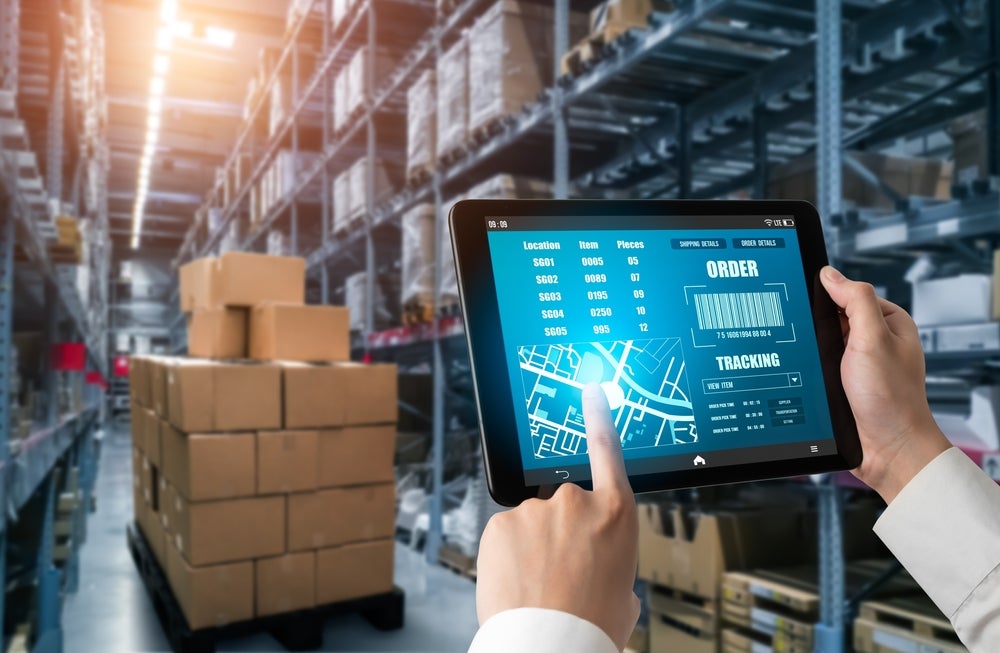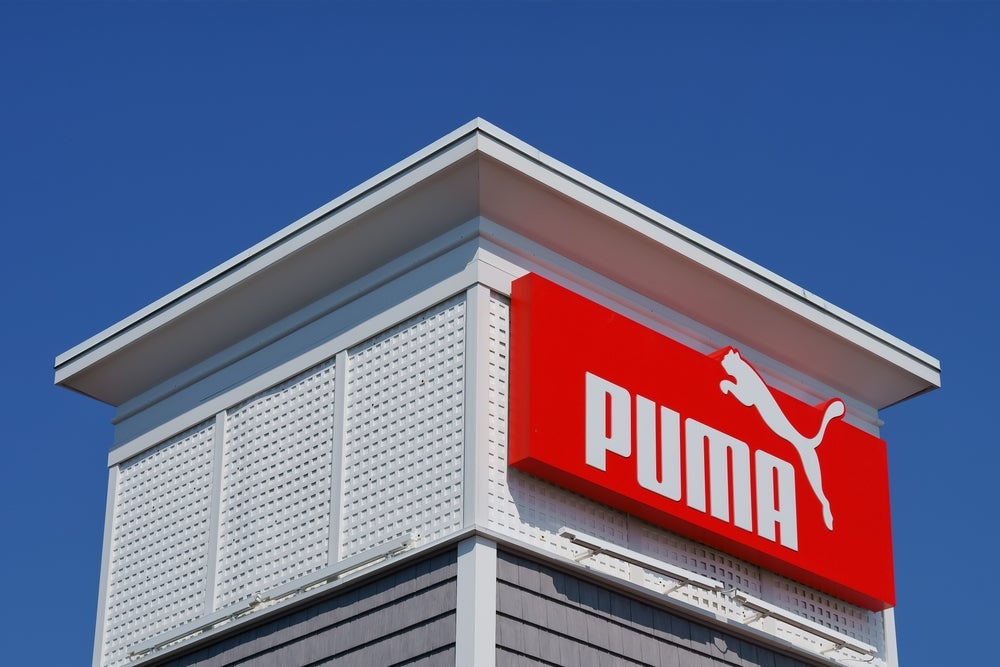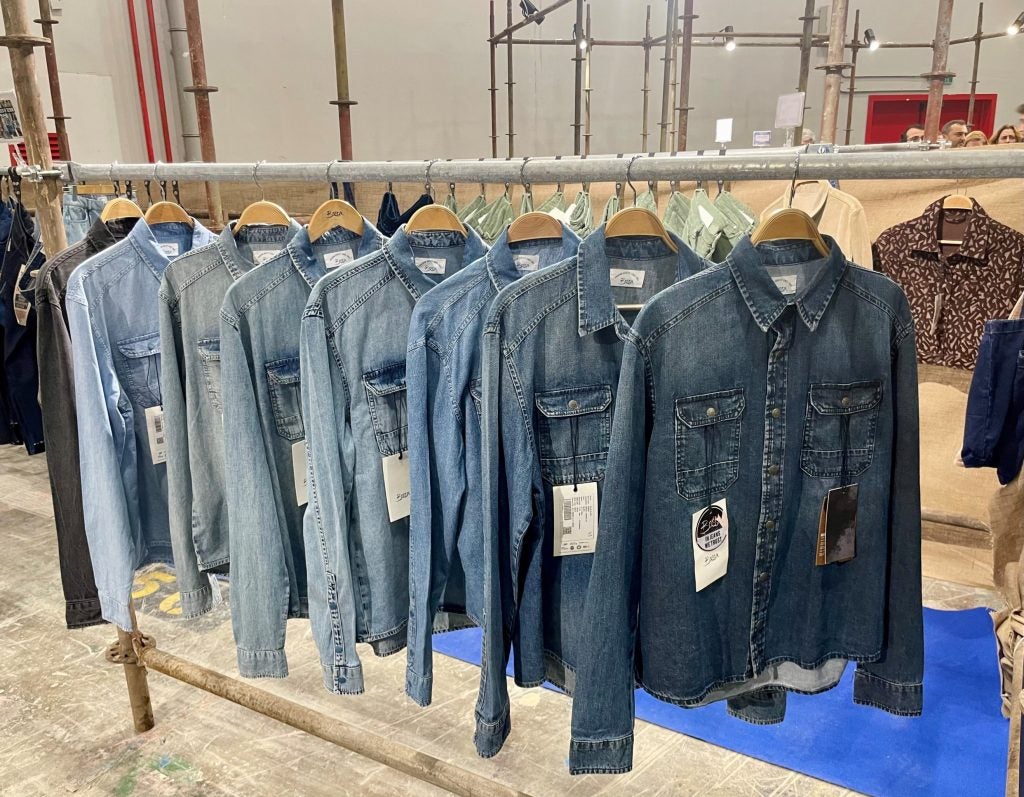
New tools and technologies are helping the apparel industry to build smarter, transparent – and more trusted – supply chains. Executives from Hugo Boss and Mango were among speakers at last week’s IAF World Fashion Convention sharing their experiences.
“A quarter of all people who look to social media are interested in fashion. They start to inform themselves before they buy anything; they look into what is available about the company, about the brand,” Heinz Zeller, head of sustainability and logistics at German fashion brand Hugo Boss, told delegates at last week’s 34th IAF World Fashion Convention in Maastricht. “62% make a decision based on this information [but] 40% don’t believe what the brand is saying about its own performance.”
Part of the problem is the lack of transparency into the end-to-end supply chain. While many major companies such as Gap Inc, Timberland and Uniqlo are now disclosing their supplier factory lists, the real difficulty comes in moving beyond this first tier. The breaking point comes at the raw materials stage where “nobody is able to disclose anything.”
Zeller believes blockchain could be the future of supply chain transparency, enabling a retailer – or even a consumer – to trace the so-called “story” of a garment right back to the origins of the raw materials, including for example, where the cotton was grown.
Offering a secure and transparent way of sharing information – as opposed to the current network of proprietary systems – a blockchain is essentially a digital ledger. Anyone with permission to access the ledger can make changes and add information. These changes are called ‘blocks’ and they are added to the ‘chain’.
See Also:
And there are additional benefits. “It’s not only about sustainability indicators, it can also be business oriented information like stock or capacity,” Zeller says, adding the fact the information is available in real time means the user does not have to look at thousands of platforms for authenticity.
How well do you really know your competitors?
Access the most comprehensive Company Profiles on the market, powered by GlobalData. Save hours of research. Gain competitive edge.

Thank you!
Your download email will arrive shortly
Not ready to buy yet? Download a free sample
We are confident about the unique quality of our Company Profiles. However, we want you to make the most beneficial decision for your business, so we offer a free sample that you can download by submitting the below form
By GlobalData“This is a system where we put CSR into daily procurement and the financing on top, so you can have visibility into your supply chain with all three ingredients in one: a supply chain dashboard.”
Beyond the supply chain business there is an opportunity to not only “connect the dots,” but to look into management, and “if I do order management, I’m getting to traceability. I can follow a single product’s path from the cotton farm to my warehouse, and I can also provide this to my customers at the end.
“But what’s really interesting is that I can also do customs clearance with that because I have the information available, and I have supplied this information digitally. We are going to reduce operating costs throughout the whole supply chain.
“That’s why it’s not just something you’re going to use to manage your supply chain, it’s not just something for the CSR manager, it’s really a big ecosystem,” he says.
Supply chain of trust
“You can’t lie in blockchain. If you lie in blockchain, people know” – Craig Crawford
Craig Crawford, founder of London-based consultancy Crawford IT, agrees. “You can’t lie in blockchain,” he told delegates. “If you lie in blockchain, people know. So trust is everything.
“Trust is sharing and trust is collaboration. And trust is transparency and trust is communication. So, when you think about that, as a brand, how much do you really trust your supply chain?”
For Crawford, former VP of IT strategy, architecture, and relationships at British luxury brand Burberry, adds: “The supply chain is very complex and we manage everything manually; it’s mind-boggling. But when we share data, when we share traceability, when we share quality, and we share our wisdom with one another, we start to build trust.
“And when we have this digitally, we have the opportunity to collaborate. Everybody is connected, everybody has the same information, everybody gets a voice and quite frankly, we start to do co-creation. If you’ve not done that before, it can be a real daunting experience.”
There is also a need to “speak to the factories in their own native language and adopt industry language that the sector understands: constantly, consistently, and across multiple channels.”
And it has to be effective. “How much back and forth do you have currently because of communication problems? I’m not trying to scare you. I’m just saying that if you aren’t on this journey, this is your chance to learn how to do this. So, trust, sharing, collaboration, transparency, and communication.
“It’s about being strategic because the second you have all this data digitally, you can start looking across it and making decisions that you did instinctively before, or it took a long time to compile in spreadsheets.
“Spreadsheets are good for small companies…for organising things, but you can’t run your business off of spreadsheets. But you can with understanding what’s happening in real time…and the only way you can do that is by pulling all this data together digitally.”
Evolving sourcing strategies
At Mango, Spain’s second-largest fashion retailer and exporter after Inditex, head of sourcing Andrés Fernández explains the company is constantly rethinking and revising its sourcing strategy: “Where to buy, which suppliers to go to, revising our supplier portfolio.”
This is partly to limit the “impact that our operations and the production of our garments has in the environment,” but also to ensure the business has the ability to respond to rapidly changing online sales trends. “Maybe new product requests that come up so suddenly you need to have suppliers that you could use, sportswear that you’ve never had – and you have to find ways of getting those.”
While online today represents 15% of Mango’s sales, Fernández says this is expected to expand to 20% in just two or three years’ time. “That’s a lot and we need to be able to find the quickness and capacity of reaction for that.
The retailer still sees China as a “major sourcing hub,” currently sourcing 25% of its garments from the East Asian powerhouse, while Morocco and Turkey combined constitute 22%, Bangladesh 19%, and India 8%.
The search for new suppliers is a “permanent process” – Andrés Fernández
However, the search for new suppliers is a “permanent process,” with Fernández also keeping an eye on developing low-cost options in Myanmar and Ethiopia.
But finding new suppliers “is a constant revision of what you’re doing and how you’re doing it. It’s a bit of a painful process and quite frustrating in the sense that it takes a lot of time, effort, and research in contacting people, and you’re not always going to get the answer that you’re expecting.
“There’s a very low ratio of success between suppliers that you contact and suppliers that you successfully incorporate into your portfolio, so it all makes the whole process very slow, and very, very costly. You cannot implement those changes into your sourcing strategy in just a few days; it takes a month or so and this makes us think there must be a better way to help speed up the whole process to make it cheaper and faster.”
To help improve this conversion rate, the retailer has been working with FourSource, a business-to-business platform that connects buyers with its global database of verified garment manufacturers.
“Why not use technology to help approach suppliers in a single and unique way, with quick communication and quick response. It makes the whole process much faster and, in the end, brands like us really want to make sure that the suppliers we work with are going to be on par with our requests in terms of human rights, quality, sustainability.
“The whole validation process, the onboarding of suppliers, the faster you can do it, the better for your company. It seems like technology finally allows for that.”
Click here to read more coverage from the IAF World Fashion Convention, including how the convergence of disruptive new technologies, easy access to cheap capital, and changing consumer attitudes are shaking up an already-broken retail model.







